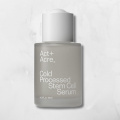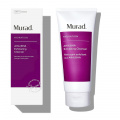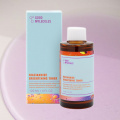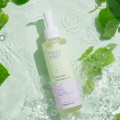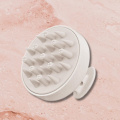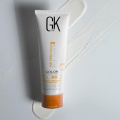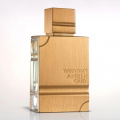How to Take Care of Colored Hair: An Essential Beauty Breakdown
Hair color treatment may make your tresses dry, rough, and brittle. This beauty guide with fail-proof tips might come in handy to take care of your dyed hair.
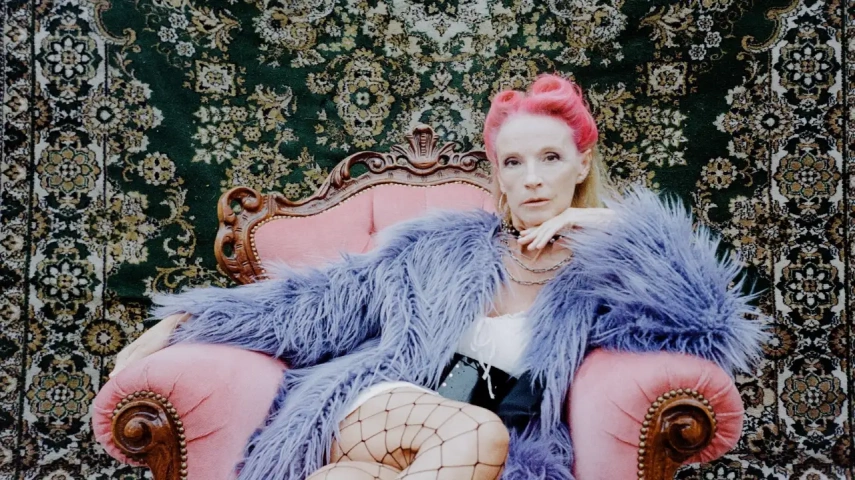
Your hair is a direct extension of your personality. Today, in-salon services like hair color treatment and more may help define your persona and thoughts. According to research, hair color might be categorized into - oxidative or non-oxidative, based on their chemical composition (1). Your mane may be colored temporarily or permanently depending on the type of hair color being used and its degree of penetration into the hair shaft (2). While dyed hair looks great and lends your overall physical appearance an instant boost, your hair can be difficult to maintain, leading you to question how to take care of colored hair.
Studies suggest that the chemicals in hair color might cause detrimental effects on your tresses, skin, and overall health. A hair dye treatment may lead to contact dermatitis, cancer, and other forms of allergic reactions (2). Additionally, your hair might also become dry, rough, and brittle (1), (2). Ahead, find the ultimate dyed hair tips, everything you ought to know about hair color protection and a breakdown of how to maintain your colored hair.
Guide to Maintaining Hair Post Coloring
Colored hair may have negative consequences in the long run. These colors or hair dyes contain complex pigments like para-phenylenediamine, para-toluene diamine, para-aminophenol, and para-aminophenol which enter your hair shaft. When these pigments react with your hair strands, they might damage the ultrafine structure of your hair cuticles and cortex (2), (3), (4). Further, such harmful treatments may lead to increased porosity in colored hair while making your hair strands unruly and unmanageable (2), (4). Here are some dyed hair tips to practice and keep in mind that will help you maintain and protect your mane post-coloring.
- Don’t Wash Your Hair Immediately After Coloring
According to anecdotal evidence, it is advisable to not wash your hair for 72 hours after hair color treatment. Research suggests that shampooing or simply washing your hair immediately post-dyeing might cause the hair color to wash away. There is a high possibility for the color to be dissolved with water and leach away from your hair shaft (3), (4). Hence, to maintain your colored hair tips it is wise to not wash your hair instantly and allow the hair color to settle in your strands.
- Avoid Using Heat to Style Your Hair
It is important to ensure that your colored-treated hair is not exposed to heat styling or hair dryers. Studies state that when the temperature increases, it leads to more hair surface damage. Also, using hair dryers might cause irreversible adverse effects on your tresses such as dryness, roughness, and loss of hair color (5). Avoiding heat will help in keeping your hair color fresh and vibrant.
- Get Frequent Hair Color Touch Ups
If you’re someone who experiences faster hair growth, your non-colored hair will likely start showing from the roots. So, to maintain a uniform appearance of your hair color, it is important to get frequent touch-ups from salon experts. This method also allows you to identify the part of your hair where color has faded and accordingly color it.
How to Take Care of Chemically Colored Hair at Home
Have you been thinking about how to take care of dyed hair at home? From selecting the right shampoo to deep conditioning remedies, here’s everything you may do to protect colored hair.
- Try A Hot Oil Treatment
In case you have been wondering, “Can I oil my hair after coloring” then here’s your answer — yes, you may! All you need to do is apply coconut oil to clean your hair and cover your head with a shower cap. You may add some heat with a hot towel or simply sit in the sun. Once your hair has cooled down and the oil has been absorbed, use a mild formulation shampoo to clean your tresses (4), (6).
According to research, coconut oil has proven to be one of the best-dyed hair tips to nourish and maintain colored hair (6). The low molecular weight and straight linear chain of coconut oil enable it to penetrate deep into your hair shaft and nourish it from the inside. Additionally, since coconut oil is also a triglyceride of lauric acid (principal fatty acid), it helps in minimizing protein loss for both treated and untreated hair (4), (6).
- Use A Color Protectant Shampoo to Clean Your Hair
After coloring your hair, it is imperative to ensure that your scalp and tresses are clean and dry. This may be achieved by shampooing your hair. However, frequent shampooing may lead to a loss of color which might cause your hair dye to fade away after 10-15 washes (3), (4). Hence, you may use a hair color protection shampoo that will prevent the stripping of color from your hair strands and keep its vibrancy intact. Further, research suggests that shampooing might help in preventing hair shaft damage, reduce frizz, and combat greasy hair by cleaning your mane (4).
- Remember to Condition your Hair After Coloring
Just shampooing your hair may not be enough to protect colored hair. Once you have shampooed, make sure that you use a color-safe conditioner in your routine. According to research, conditioners might help in minimizing frizz, decrease friction, detangle hair, and also make it easier to comb through colored hair. Moreover, conditioners work by neutralizing the negative electrical charge in your hair fiber by converting them into positive charges. This haircare product contains anti-static and lubricating substances which enter your hair cuticles, lock moisture, and seal them (4). Hence, conditioning after shampooing might help in keeping your mane healthy and smooth post-coloring.
- Nourish Your Hair With Protein Treatments
One of the biggest side effects of chemical treating or coloring your hair is the protein loss that comes with it. This loss may have a detrimental effect on your hair shaft and eventually lead to damage (7). Wondering what to do after dying hair at home? To combat the adverse effects of this protein loss in your colored hair, you may invest in hair treatments that enrich your mane with the lost protein. You might opt for an in-salon service such as a keratin K31 treatment which promises marked improvements in the strength and texture of your hair (8). Or, you may also try natural remedies like making hair masks with protein-rich food sources such as egg yolks (9), (10).
- Apply Leave-In Conditioners to Your Dyed Hair
Here’s another simple yet effective technique on how to keep dyed hair healthy. You may use a leave-in conditioner to ensure that your colored hair is maintained. According to studies, these conditioners contain silicones which form a layer on your hair shaft for ultimate protection. Further, it may also enhance the inter-fiber forces in your hair shaft and provide you with an easy, detangling effect. Leave-in conditioners might also assist in protecting your dyed hair from heat damage (4), (5).
- Eat Supplements to Maintain the Health of Colored Hair
It is important to consume a diet packed with minerals and vitamins that may ensure good health for your hair (11). For instance, studies state that vitamin C helps in keeping the blood vessels in your scalp healthy and also absorbs iron from plant proteins. These functions and properties of vitamin C may protect colored hair and ensure to keep your mane healthy (12). Hence, it is important to eat food that is rich in nutrients that might be beneficial for colored hair.
- Avoiding Swimming With Dyed Hair
The water in a swimming pool contains harmful elements like chlorine and hypochlorous acid that may have a detrimental effect on color-treated hair. According to research, these harmful chemicals might enter your hair cortex through the cuticles. Gradually, it may start an oxidizing reaction on your hair strands which might cause hair discoloration (13). So, one of the most crucial dyed hair tips for you might be to avoid swimming or to wear a protective cap before the swim.
Things to Avoid Using on Colored Hair

Now that you know how to maintain colored hair, it is also crucial to learn about the elements that may pose a threat to your dyed hair. Here are some things you may avoid for healthy, colored hair.
- After coloring your hair, you may avoid using shampoos with sulfates. According to studies, the sulfates might be too strong for chemically treated hair and cause the color to fade (4).
- Avoid using heat on your hair as it may cause damage to your hair shaft. Using styling tools like hair dryers might make your hair dry, rough, and frizzy in texture (4), (5).
- You may avoid using hot water to wash your hair as the heat might damage your dyed hair.
- Shampooing immediately may cause the color of your hair to fade. Hence, anecdotal evidence suggests waiting for 72 hours after hair coloring as the color may dissolve with water and leech away from the hair shaft.
Conclusion
Colored hair might add a refreshing touch to your overall look. While it looks great, it comes with its share of disadvantages. Dying your hair may lead to side effects like contact dermatitis, different forms of allergic reactions, and even cancer (2). Additionally, it might also make your hair rough, dry, and unmanageable. Hence, it is important that you consciously maintain and protect your colored-treated hair. Following simple techniques like oiling your hair, avoiding heat and styling, using a color-protectant shampoo and conditioner, having a healthy diet, and more might help in maintenance treatment for colored hair. If you keep these dyed hair tips in mind and follow them religiously, then chances are that you might be able to combat the adverse effects of coloring your mane!
Sources:
Hair Dye Ingredients and Potential Health Risks from Exposure to Hair Dyeing
https://pubmed.ncbi.nlm.nih.gov/35666914/
Hair cosmetics: dyes
https://pubmed.ncbi.nlm.nih.gov/24656996/
Investigation of hair dye deposition, hair color loss, and hair damage during multiple oxidative dyeing and shampooing cycles
https://pubmed.ncbi.nlm.nih.gov/27319056/
Hair Cosmetics: An Overview
https://www.ncbi.nlm.nih.gov/pmc/articles/PMC4387693/
Hair shaft damage from heat and drying time of hair dryer
https://pubmed.ncbi.nlm.nih.gov/22148012/
Effect of mineral oil, sunflower oil, and coconut oil on prevention of hair damage
https://pubmed.ncbi.nlm.nih.gov/12715094/
Protein loss in human hair from combination straightening and coloring treatments
https://pubmed.ncbi.nlm.nih.gov/26177865/
Health improvement of human hair and their reshaping using recombinant keratin K31
https://www.ncbi.nlm.nih.gov/pmc/articles/PMC6218806/
Naturally Occurring Hair Growth Peptide: Water-Soluble Chicken Egg Yolk Peptides Stimulate Hair Growth Through Induction of Vascular Endothelial Growth Factor Production
https://pubmed.ncbi.nlm.nih.gov/29583066/
The Health Benefits of Egg Protein
https://www.ncbi.nlm.nih.gov/pmc/articles/PMC9316657/
Diet and hair loss: effects of nutrient deficiency and supplement use
https://www.ncbi.nlm.nih.gov/pmc/articles/PMC5315033/
Vitamin C
https://medlineplus.gov/ency/article/002404.htm
Hair-discoloration of Japanese elite swimmers
https://pubmed.ncbi.nlm.nih.gov/11092265/
The art of prevention: It’s too tight—Loosen up and let your hair down
https://www.ncbi.nlm.nih.gov/pmc/articles/PMC8072502/
ALSO READ: 12 Caramel Hair Colors to Embrace the Warmth of Summer!





 JOIN OUR WHATSAPP CHANNEL
JOIN OUR WHATSAPP CHANNEL



































